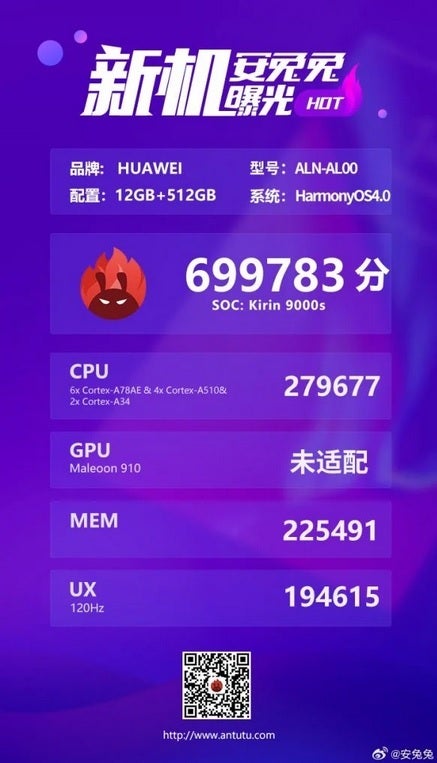Why is there so much secrecy swirling around Huawei's new 5G Kirin chipset?

Last week Huawei showed that it could take back control over the development and manufacturing of its flagship phones when it released the Mate 60 Pro. Since 2019, when Huawei was thisclose to surpassing Samsung to become the world's largest smartphone manufacturer, the U.S. has made life difficult for a company that has been called a national security threat in the U.S.
Huawei has been trying to make smartphones with one hand tied behind its back
Huawei was placed on the Entity List which prevented it from accessing its U.S. supply chain without obtaining special licenses. Without the ability to work with Google, the company scrambled to complete work on its HarmonyOS which replaced the Google Mobile Services (GMS) version of Android. And the following year, Huawei was banned from receiving cutting-edge chips made by any foundry that uses U.S. gear to produce the components.

Antutu benchmark results for the Mate 60 Pro and the Kirin 9000s SoC
Eventually, Huawei was granted permission to license 4G versions of Qualcomm's chipsets which it used to power the Mate 50 and the P60 flagships. But at the beginning of this year, a tipster on Weibo said that Huawei would surprise everyone by releasing a new phone during the second half of the year that would use a homegrown Kirin chip. You might not have realized that Huawei has one of the most innovative chip design firms with its HiSilicon unit and at one time Huawei was TSMC's second-largest customer after Apple.
The U.S. bans changed everything so it truly was a surprise (except for that aforementioned tipster) when it was discovered that the new Mate 60 Pro is equipped with a Kirin application processor (AP). According to Gizmochina, apps that can determine which AP your phone is running show that the Mate 60 Pro features a Kirin 9000s produced by HiSilicon. The chip features a 12-core design.
The configuration of the Kirin 9000s includes:
- Two Cortex-A34 low-power efficiency CPU cores.
- Six customized Cortex-A78AE CPU cores.
- Four Cortex-A510 efficiency CPU cores.
The highest clock speed, according to AnTuTu, is 2.62GHz and the chip features the Maleoon-910 GPU. The AnTuTu benchmark score was 699,783. Huawei remains quiet about the chip but did call the phone the "most powerful Mate model ever" (why do I hear Jony Ive saying this?). However, compare the score with the 1,556,351 tallied by the Galaxy S23 Ultra using the Snapdragon 8 Gen 2 for Galaxy AP.
There is a big mystery here. The only chip manufacturer in China that is capable of doing Huawei's bidding is SMIC and it is technologically limited when it comes to the production of cutting-edge smartphone chips. SMIC is blocked from importing the extreme ultraviolet lithography machine (EUV) needed to etch the necessary circuity patterns on a silicon wafer thin enough to build chipsets that will compete with TSMC and Samsung's most advanced nodes. For example, the iPhone 15 Pro models about to be unveiled will be the first smartphones powered by chips produced with a 3nm process node.
Tipster said 3 days before the announcement that Huawei was about to bring back its Kirin chipsets
Tipster @Tech_Reve posted three days before the Mate 60 Pro was announced that Huawei was about to bring back a 5G Kirin chipset for its smartphones. The tipster posted two possible configurations, neither one of which matched the Kirin 9000s which means that they could be for a pair of rumored Kirin chipsets, the Kirin 720 or Kirin 830.
More interesting was his comment on the possibility that SMIC was building the chip using its N+2 (7nm) node. It is possible to build 7nm without EUV lithography, but it would be hard to do. While that might be one theory, Huawei is believed to be working on ways it can bypass the use of EUV by using optoelectronic wafers and other innovations. At the same time, Huawei filed for a patent on some EUV components and the EUV lithography process.
It would be interesting to see what the reason is for all of this secrecy because this should be a moment for Huawei to proudly explain how it outsmarted all of those countries that wanted to permanently bury its smartphone operations.
Follow us on Google News












Things that are NOT allowed:
To help keep our community safe and free from spam, we apply temporary limits to newly created accounts: